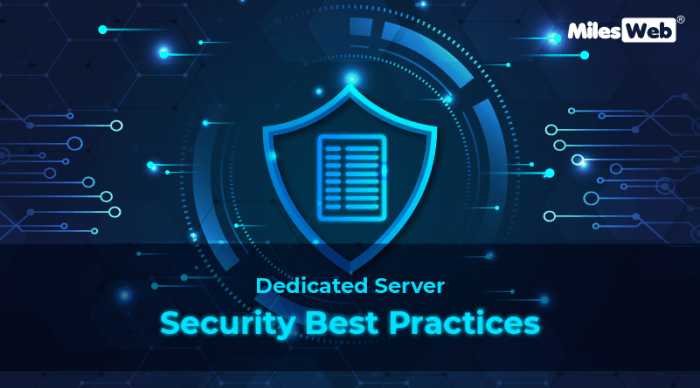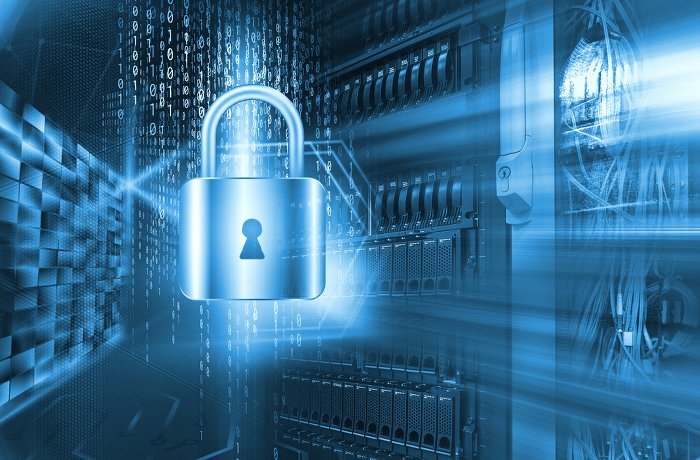In the digital realm, dedicated servers serve as the backbone of many businesses and organizations, housing critical data and applications. However, these servers are not immune to the lurking threats of cyberattacks. This article delves into the world of dedicated server security, exploring the common threats, best practices, and essential measures to safeguard these vital assets.
Securing dedicated servers is paramount to protecting sensitive information, preventing downtime, and maintaining business continuity. By implementing robust security measures, organizations can mitigate risks and ensure the integrity of their data and operations.
Dedicated Server Security Threats
Dedicated servers, while offering enhanced control and customization, are not immune to security threats. Understanding these threats and their potential impact is crucial for organizations to safeguard their data and operations.
Common threats to dedicated server security include:
Hacking
- Unauthorized access to a dedicated server can lead to data theft, system disruption, or malicious activity.
- Hackers may exploit vulnerabilities in software, operating systems, or network configurations to gain access.
Malware
- Malicious software, such as viruses, ransomware, and spyware, can infect dedicated servers and cause significant damage.
- Malware can steal data, encrypt files, or disrupt system functionality.
DDoS Attacks
- Distributed Denial of Service (DDoS) attacks overwhelm a dedicated server with excessive traffic, making it inaccessible to legitimate users.
- DDoS attacks can disrupt business operations, damage reputation, and result in financial losses.
Data Breaches
- Data breaches involve the unauthorized access or disclosure of sensitive information stored on a dedicated server.
- Data breaches can result in identity theft, financial fraud, reputational damage, and legal liabilities.
Best Practices for Dedicated Server Security

Dedicated servers require robust security measures to protect against cyber threats. Implementing best practices is crucial for maintaining server integrity and data confidentiality. These practices include hardening the operating system, deploying firewalls, implementing intrusion detection systems, and regularly updating software.
Hardening the Operating System
Hardening the operating system involves configuring it securely to minimize vulnerabilities. This includes disabling unnecessary services, removing default accounts, and applying security patches. Additionally, consider using a security-focused operating system designed for server environments.
Using Firewalls
Firewalls act as gatekeepers, filtering incoming and outgoing network traffic. Configure firewalls to allow only authorized traffic and block suspicious connections. Implement rules based on IP addresses, ports, and protocols to restrict access to specific resources.
Implementing Intrusion Detection Systems (IDS)
IDS monitor network traffic for suspicious activities, such as unauthorized access attempts or malware infections. They can detect and alert administrators to potential threats, allowing for prompt response and mitigation. Consider using both host-based and network-based IDS for comprehensive protection.
Regularly Updating Software
Software updates often include security patches that address vulnerabilities. Regularly updating the operating system, applications, and firmware ensures that known security flaws are patched and the server remains protected against emerging threats. Automate updates whenever possible to streamline the process and minimize downtime.
Monitoring and Maintaining Dedicated Server Security

Ensuring dedicated server security is a continuous process that involves monitoring and maintenance. Regular checks help prevent and detect threats, while updates keep systems protected against vulnerabilities.
To establish a monitoring system, use tools like security information and event management (SIEM) solutions or log analysis tools. These systems collect and analyze server logs, identifying suspicious activities and potential threats.
Performing Regular Security Checks
- Scan servers for vulnerabilities using vulnerability scanners. These tools identify weaknesses that could be exploited by attackers.
- Review security logs regularly for any unusual activity or failed login attempts.
- Monitor network traffic for suspicious patterns or unauthorized access.
- Perform penetration testing to simulate real-world attacks and identify potential security breaches.
Keeping Servers Up to Date
Apply security patches and updates promptly. These updates often include fixes for known vulnerabilities and enhance server security.
Configure automatic updates for operating systems and applications to ensure timely patching.
Monitor security advisories and bulletins from software vendors and apply updates as soon as possible.
Disaster Recovery and Incident Response for Dedicated Servers
Having a disaster recovery plan in place is crucial for dedicated servers to minimize downtime and data loss in the event of unexpected incidents. A well-defined plan provides a clear roadmap for quick and efficient recovery, ensuring business continuity.Steps to take in the event of a security breach or server failure include:
Identify and contain the incident Determine the nature of the breach or failure and isolate the affected systems to prevent further damage.
Assess the impact Evaluate the extent of data loss, system downtime, and potential financial consequences.
Activate the disaster recovery plan Follow the established procedures to restore critical systems and data.
Communicate with stakeholders Inform relevant parties, including customers, employees, and vendors, about the incident and the recovery efforts.
Investigate the cause Conduct a thorough analysis to determine the root cause of the incident and implement measures to prevent similar events in the future.
Data Recovery and Server Restoration
Data recovery is a critical aspect of disaster recovery. Regularly backing up data to a secure offsite location ensures that it can be restored quickly in the event of a server failure or data loss.Server restoration involves rebuilding the affected systems and restoring data from backups.
This process requires a thorough understanding of the server configuration and the availability of necessary hardware and software.
Dedicated Server Security Standards and Compliance

Industry standards and compliance requirements play a crucial role in ensuring the security of dedicated servers. These standards provide a framework for implementing and maintaining effective security measures, helping organizations protect their sensitive data and systems from cyber threats.
Two prominent standards for dedicated server security are ISO 27001 and PCI DSS.
ISO 27001
- ISO 27001 is an international standard that specifies requirements for establishing, implementing, maintaining, and continually improving an information security management system (ISMS).
- It provides a comprehensive set of security controls covering areas such as access control, risk assessment, incident management, and business continuity.
- Adhering to ISO 27001 demonstrates an organization’s commitment to information security and helps ensure that dedicated servers are protected from a wide range of threats.
PCI DSS
- PCI DSS (Payment Card Industry Data Security Standard) is a set of security requirements specifically designed for organizations that process, store, or transmit credit card data.
- It includes requirements for secure network configuration, strong authentication, data encryption, and regular security assessments.
- Compliance with PCI DSS is mandatory for businesses that accept credit card payments and helps protect sensitive financial data from fraud and theft.
Achieving compliance with these standards requires a systematic approach that involves:
- Conducting risk assessments to identify potential threats and vulnerabilities.
- Implementing appropriate security controls to mitigate risks.
- Regularly monitoring and testing security measures to ensure effectiveness.
- Providing ongoing training and awareness programs for employees.
By adhering to dedicated server security standards and compliance requirements, organizations can significantly reduce the risk of cyber attacks, protect sensitive data, and maintain the integrity and availability of their dedicated servers.
Last Point
In conclusion, dedicated server security is a multi-faceted endeavor that requires a comprehensive approach. By understanding the threats, adhering to best practices, and implementing proactive monitoring and maintenance strategies, organizations can safeguard their dedicated servers and protect their valuable data.
Embracing industry standards and compliance requirements further enhances security posture, ensuring alignment with recognized best practices and regulatory mandates. By prioritizing dedicated server security, organizations can empower themselves to navigate the digital landscape with confidence and resilience.
Common Queries
What are the most common threats to dedicated server security?
Hacking, malware, DDoS attacks, and data breaches pose significant threats to dedicated server security.
How can organizations mitigate the risks of dedicated server security breaches?
Hardening the operating system, using firewalls, implementing intrusion detection systems, and regularly updating software are effective measures to enhance dedicated server security.
Why is monitoring and maintaining dedicated server security crucial?
Monitoring and maintaining dedicated server security allows organizations to detect and prevent threats, keeping their systems protected and operational.


